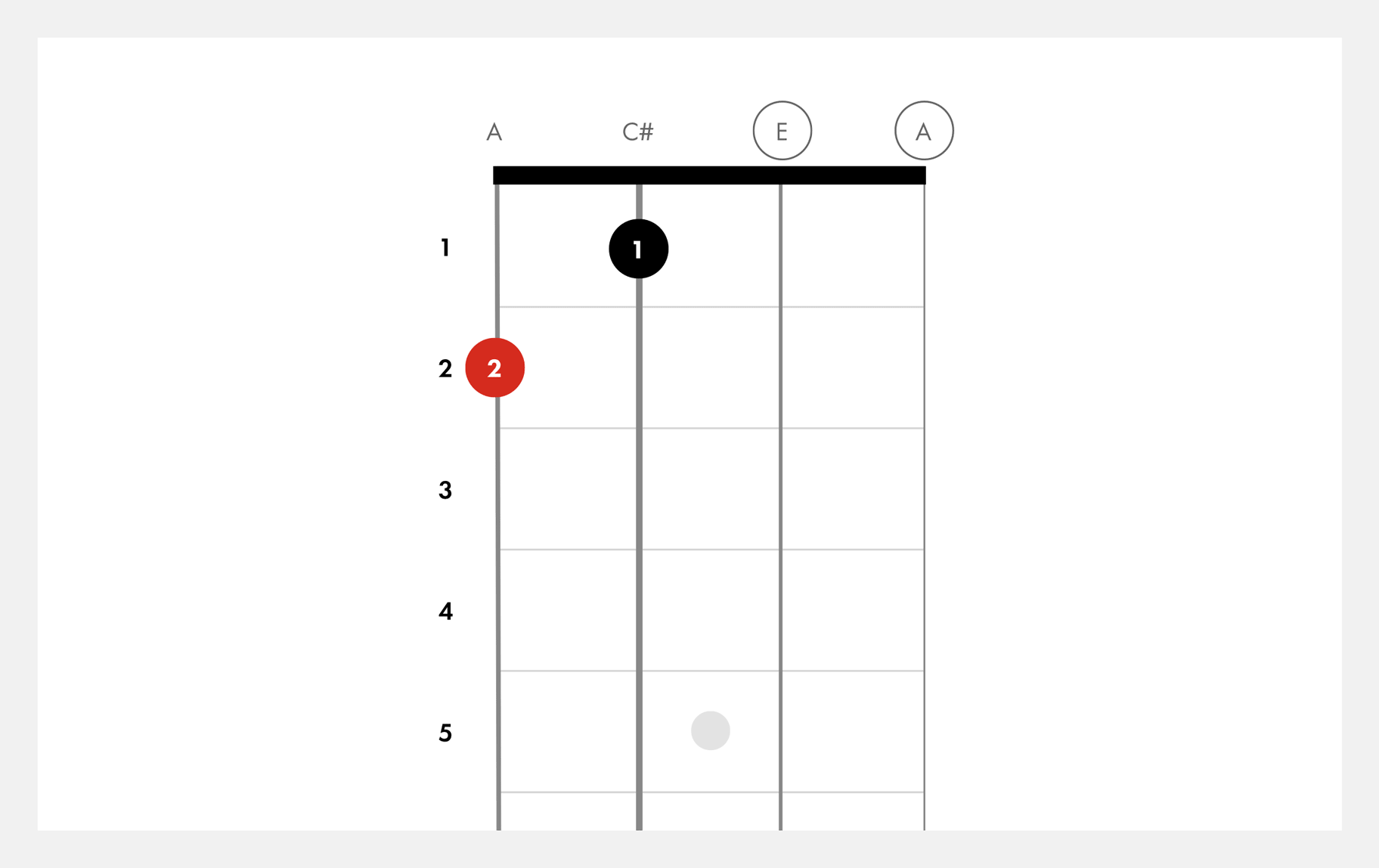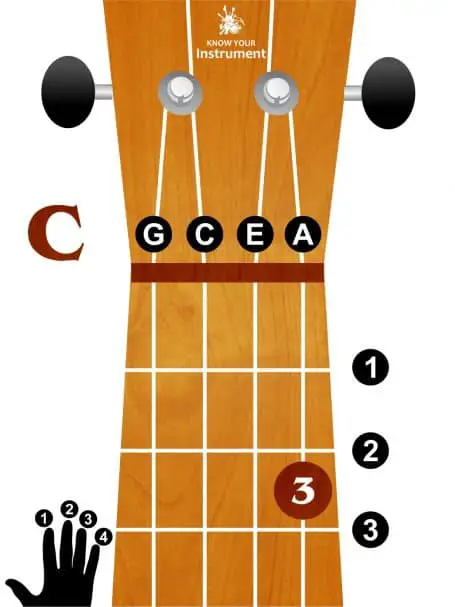The four standard chords on a ukulele are C, G, Am, and F. These chords are fundamental for beginners to learn. The charming sounds of the ukulele capture hearts with its simple yet versatile four-string structure, making it an ideal instrument for novice and experienced musicians alike.
Its lightweight and portable design allows players to create music wherever they go, contributing to its popularity. Mastering these basic chords opens up a vast repertoire of songs, as many popular tunes can be played using just a handful of chord progressions.
As you learn to strum the ukulele, understanding how to form these chords quickly will lead to smoother transitions and more enjoyable playing. Whether sitting by a campfire or serenading friends, knowing these chords is the first step in your ukulele adventure.
Introduction To The Ukulele
The ukulele, often known as the ‘uke’, is a delightful stringed instrument that brings joy and music to hearts worldwide. Its small size and light strings make it perfect for musicians of all ages. Before diving into the chords that create its melodic tunes, let’s peek into its background and significance in music culture.
Brief History
The ukulele’s journey began in the late 19th century. It traveled from Portugal to the Hawaiian Islands. Gifted Portuguese craftsmen made a lasting impact with their ‘machete’, a small guitar-like instrument. The Hawaiians fell in love with its sound. They named it ‘ukulele’, which means ‘jumping flea’, perhaps a nod to the lively movements of a player’s fingers.
Popularity And Cultural Impact
The ukulele soared in popularity across Hawaii and then the world. Its cheerful sound became a symbol of Hawaiian culture. Iconic figures like Elvis Presley and The Beatles embraced the uke. It has since found a place in schools, music clubs, and on the global stage, often associated with peace and happiness.
Credit: en.m.wikipedia.org
Essential Ukulele Chords
Strumming a ukulele brings joy to audiences of all ages. To start playing, you need to learn a few basic chords. These chords form the backbone of most ukulele songs. Let’s dive in and explore the essential ukulele chords you’ll love to learn and play.
Major Chords
Major chords create a happy and uplifting sound. They are often the first set of chords beginners learn. Here are the four major chords on the ukulele:
- C Major: Place your ring finger on the third fret of the A string.
- G Major: Place your index finger on the second fret of the C string, your ring finger on the third fret of the E string, and your middle finger on the second fret of the A string.
- A Major: Place your index finger on the first fret of the C string and your middle finger on the second fret of the G string.
- F Major: Place your index finger on the first fret of the E string and your middle finger on the second fret of the G string.
Minor Chords
Minor chords have a more mellow and reflective sound. Here’s how to play some common minor chords:
- Am (A minor): Place your middle finger on the second fret of the G string.
- Em (E minor): Place your index finger on the second fret of the A string, your middle finger on the third fret of the E string, and your ring finger on the fourth fret of the C string.
- Dm (D minor): Place your index finger on the first fret of the E string, your ring finger on the second fret of the G string, and your middle finger on the second fret of the C string.
- Bm (B minor): Place your index finger across all strings at the second fret and your ring finger on the fourth fret of the G string.
Seventh Chords
Seventh chords add depth to the music with a bluesy twist. These chords can give songs a jazzy feel. Play these popular seventh chords:
- C7: Place your index finger on the first fret of the A string.
- G7: Place your index finger on the first fret of the E string, your middle finger on the second fret of the C string, and your ring finger on the second fret of the A string.
- A7: Place your index finger on the first fret of the C string.
- E7: Place your index finger on the first fret of the G string, your middle finger on the second fret of the C string, and your ring finger on the second fret of the A string.
Chord Diagrams And Fingering
Understanding how to read chords and place your fingers on the ukulele’s fretboard is essential for making music. To help players, chord diagrams serve as a visual aid and fingering techniques ensure smooth transitions between chords.
Reading Chord Diagrams
Chord diagrams illustrate how to play chords on the ukulele fretboard. Imagine holding your ukulele in front of you – the diagram mirrors this view.
- Vertical lines represent strings, with the leftmost line indicating the G-string.
- Horizontal lines show frets, with the top line as the nut of the ukulele.
- Dots reveal where to place fingers, usually numbered for convenience.
Fingering Techniques
Efficient fingering is key to playing chords fluently. Each finger has a designated role, ensuring you can move between chords easily and quickly.
- Thumb: Stays behind the neck to support.
- Index: Often used for barring or pressing multiple strings.
- Middle: Useful for reaching notes on different frets.
- Ring and Pinky: Access higher frets or for more complex chords.
Tips for Optimal Fingering:
| Tip | Explanation |
|---|---|
| Maintain a relaxed hand | Prevents strain and improves agility. |
| Use fingertips | Prevents muting adjacent strings. |
| Start slowly | Better precision and muscle memory. |
Practice often to build up your muscle memory. Your fingers will naturally find their way to the correct strings and frets.

Credit: www.fender.com
Strumming Patterns And Rhythm
Mastering the strumming patterns and rhythm on a ukulele brings your music to life. Strumming patterns create the heartbeat of a song, while rhythm keeps the beat alive. To give your uke melodies energy and flow, familiarize yourself with some key strumming skills. Let’s dive into the world of ukulele strums!
Common Strumming Patterns
Understanding common strumming patterns helps beginners start playing songs quickly. Here are the most popular ones:
- Down-Up Pattern: Strum down, then up—repeat and keep steady.
- The Island Strum: Down, down-up, up-down-up, capturing that tropical sound.
- Triple Strum: Three quick down strums per beat for a lively tune.
Practice these patterns slowly, then speed up as you get comfortable.
Matching Rhythm With Chords
To sound like a pro, match the rhythm with the chords. Here’s how:
- Start with the chord progression of your song.
- Listen to the song to understand its rhythm.
- Pick a strumming pattern that fits the song’s feel.
- Strum gently for soft parts, and strum harder when the song builds up.
Playing the right rhythm makes each chord shine and the song sound complete.
Progressing With More Complex Chords
Welcome to the melodic journey of playing the ukulele! As you get comfortable with the basic chords, it’s time to challenge yourself. Exploring more complex chords will add depth and emotion to your playing.
Barre Chords On The Ukulele
Barre chords open up a new world on your fretboard. They require pressing multiple strings down with one finger. It’s like having a moveable capo at your fingertips. With practice, barre chords become second nature. Here are common shapes to master:
- B major: Index finger on all strings at the 2nd fret, other fingers form an E major shape.
- F# minor: Similar to B major but with the third finger lifted.
These shapes glide along the fretboard to create different chords. Patience and practice will make these chords ring clear and true.
Diminished And Augmented Chords
Diminished and augmented chords may sound complex, but they are just unique combinations of notes. They add tension and resolution to music—perfect for dramatic effects. Here’s how you can play them:
| Chord | Fingering |
|---|---|
| G# diminished | Index finger on C string 1st fret, ring finger on A string 1st fret. |
| C augmented | Index finger on G string 2nd fret, middle finger on C string 1st fret. |
These chords might twist your fingers at first, but they add a unique spin to your music. Keep trying, and your efforts will pay off.
Practice And Performance Tips
Mastering the ukulele chords hinges on consistency and smart practice strategies. Unlocking your potential involves daily dedication and applying chords in engaging musical contexts. Embrace these tips to elevate your playing to concert-worthy levels.
Daily Practice RoutineDaily Practice Routine
Establish a routine that blends structure with flexibility. Start with short sessions, gradually increasing time as you progress. Consistency trumps long, infrequent practices.
- Warm-up with simple strumming patterns for 5 minutes.
- Isolate and practice new chords for 10 minutes.
- Revisit and refine known chords for 10 minutes.
- Integrate chord transitions, focusing on smoothness for 10 minutes.
- End with creative play, exploring melodies and improvisation for 5 minutes.
Use a metronome to keep time, ensuring you build rhythm accuracy. Record your sessions to track improvement and identify areas needing work.
Incorporating Chords into SongsIncorporating Chords Into Songs
Leverage your knowledge by playing real songs. This makes practice enjoyable and reinforces your chord familiarity.
- Start with simple songs featuring three to four chords.
- Practice strumming along with the track to match its rhythm.
- Sing or hum along to internalize the chord progressions.
- Challenge yourself with faster-paced or more complex songs.
Practice with others when possible. Collaboration fosters learning and prepares you for performance scenarios. Encourage feedback from peers to gain insight and motivation.

Credit: www.knowyourinstrument.com
Are the Chords on a Ukulele Similar to Piano Chords?
While both ukulele and piano chords create harmonious sounds, there are notable differences between ukulele and piano chords. Ukulele chords often rely on fewer strings and simpler finger placements, making them easier for beginners. In contrast, piano chords can involve more complex fingerings and a broader range, catering to diverse musical styles.
Frequently Asked Questions On What Are The Chords On A Ukulele
What Are The 4 Chords Of A Ukulele?
The four main chords on the ukulele are C Major, G Major, A Minor, and F Major. These are essential for beginners to learn and commonly used in many songs.
What Is The Order Of The Ukulele Chords?
The order of ukulele chords typically follows a sequence from major to minor, often starting with C, G, A, E, and D. Practice transitioning smoothly between these common chords to play various songs.
What Are The Chords For A Beginner Ukulele?
Beginner ukulele chords include C major (C), G major (G), A minor (Am), and F major (F). These are fundamental chords, easy to learn and play on the ukulele.
What Notes Are The 4 Strings On A Ukulele?
The four strings on a ukulele are typically tuned to G, C, E, and A.
Conclusion
Wrapping up our ukulele chord exploration, we’ve uncovered the basics and some unique combinations. Remember, practice brings comfort and fluidity to your play. Keep strumming and you’ll master these chords in no time, serenading with the sweet, harmonious sounds of the ukulele.
Keep tuning in for more musical insights!
